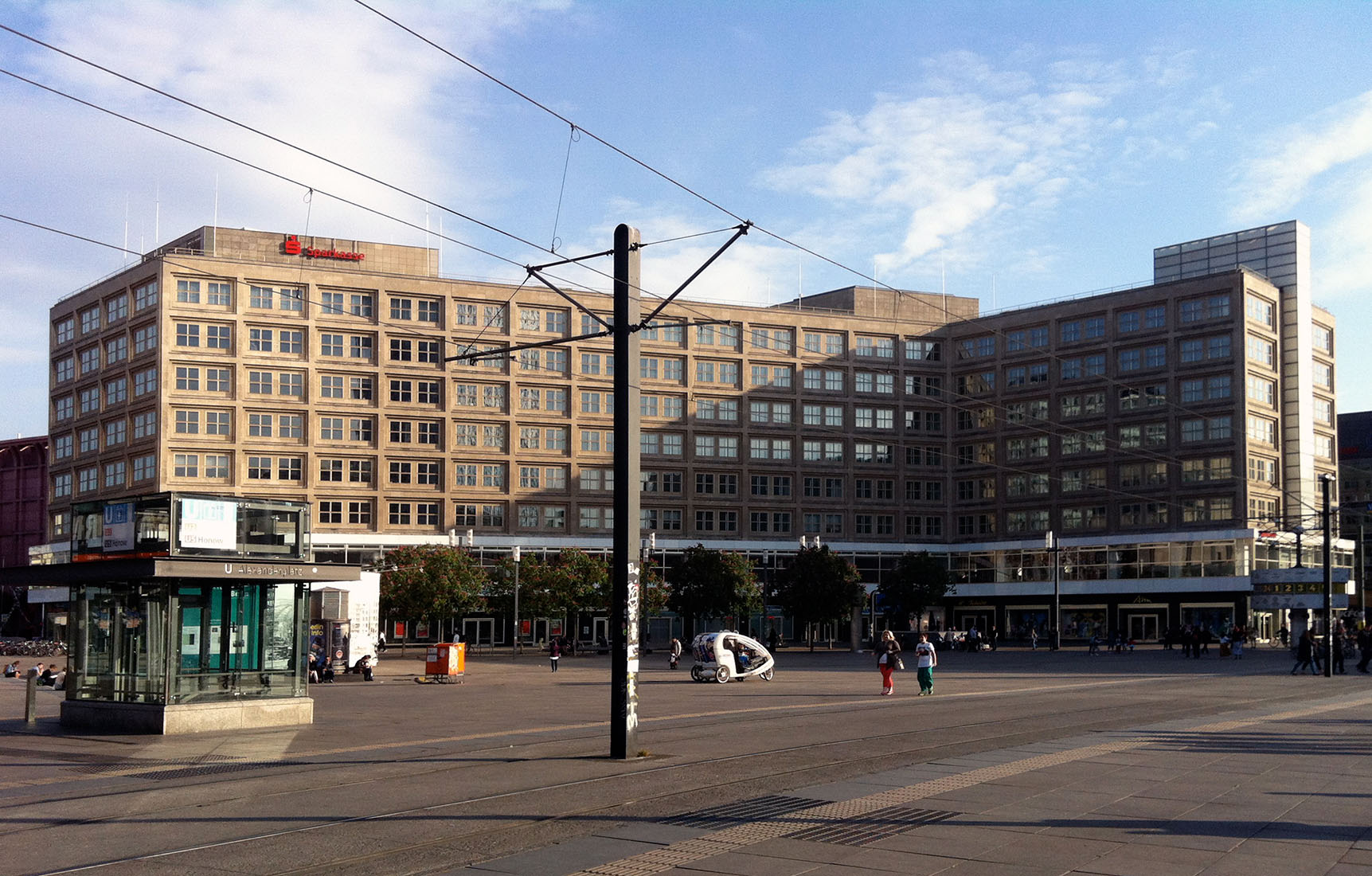 |
 |
 |
 |


Office Buildings
Alexanderplatz, Berlin
1929 - 1932
Although Peter Behrens did not win the Alexaderplatz town-planning competition, he nevertheless was commissioned to build two office buildings,
the Alexander- and the Berolinerhaus. Winners of the competition were the brothers Hans and Wassili Luckhardt. Since the investor did not agree
with their plans, he commissioned Peter Behrens, whose competition entry was awarded the 2nd prize. The emerging national socialism
and the economic depression prevented the complete implementation of the design.
In September 1929 building construction started. This building had to be built under the difficult conditions of a densely populated square of a big city.
Especially since at the same time subway lines were built, there was great lack of space. The building materials had to be installed
immediately after delivery or were stored in the basement. For the construction of the building the groundwater had to be pumped out over a large area
for several time. The buildings were opened in January 1923 after two years of construction. One of the first tenants of the house was the textile retail chain C&A.
The damages during the Second World War were not serious, so that soon the Soviet commandant's office moved into the building.
In 1952 the Berlin magistrate moved in and later other administrative authorities followed. In the early 1950s the house was renovated
and the battered facade was repaired. The work, however, was carried out without taking into account the original design.
So there remained only a little more than the grid of the concrete skeleton. The final authority in the Berolinahaus left the building in 1998.
In the following years the house was empty until the owner succeeded to sell the property to a real estate company in 2004.
Later on an authentic restoration was initiated in order to restore it largely to the original status.
The facade is dominated by grid-like arranged square windows. These are grouped differently on the facades. By dividing the window box into four squares,
the entire facade appears as a symmetrical rasterized pattern. The bright facade cladding is made of limestone, which comes from Freyburg in Saxony-Anhalt.
On the lateral side are protruding vertical light boxes of frosted glass reaching up to above the roof.